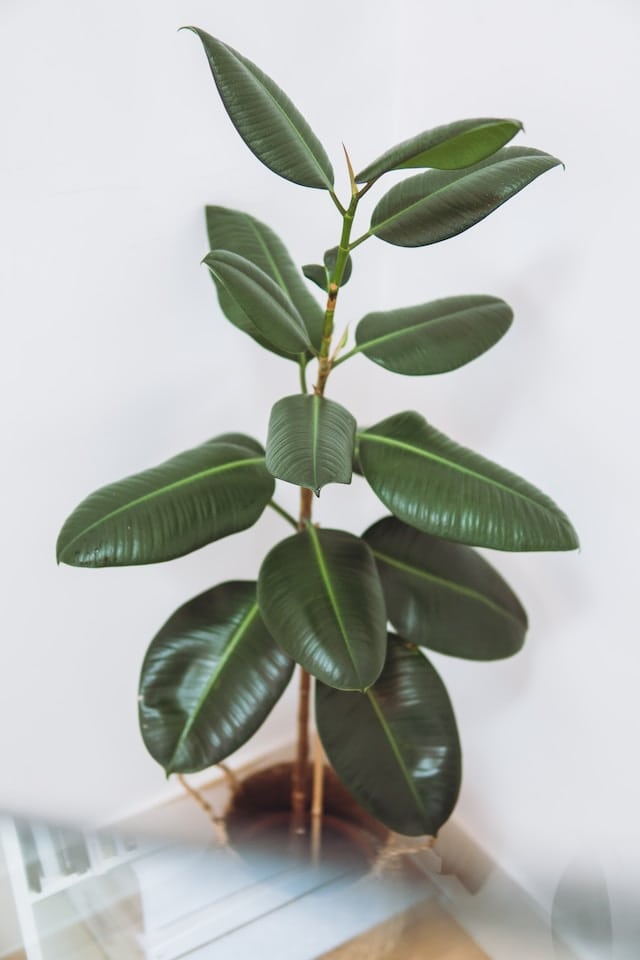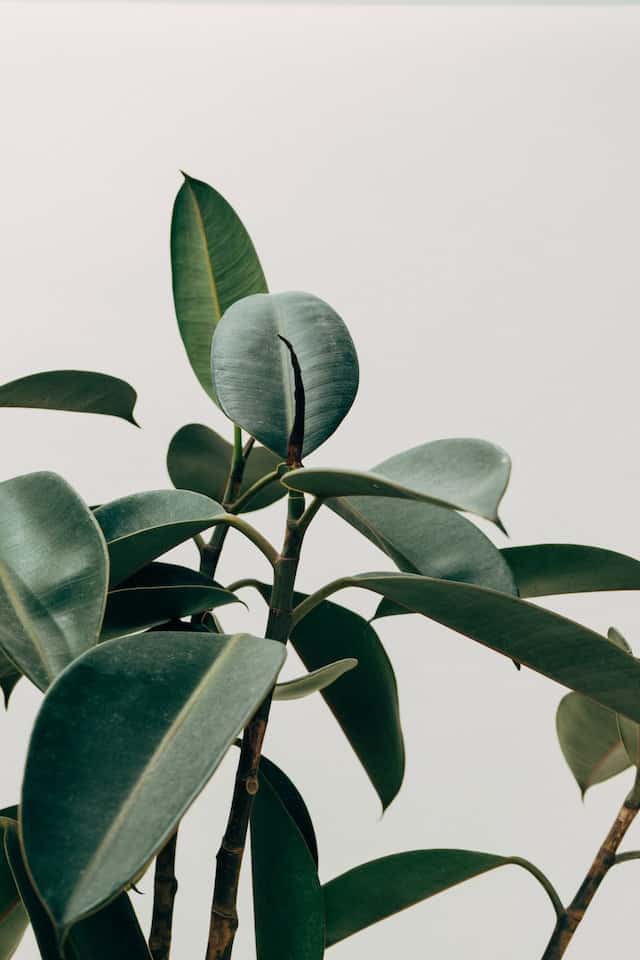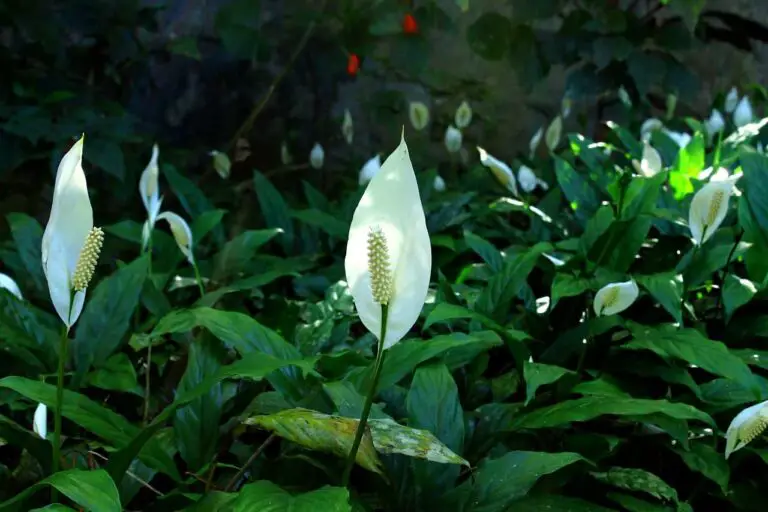Best Soil for Rubber Plants: Top Choices
The thick, glossy leaves and air-purifying capabilities make rubber plants well-known. These houseplants are low-maintenance and thrive in the right soil conditions.
Choose the Best Soil for Rubber Plants for optimal growth and health. I will discuss the most suitable option, whether you want to mix your own or use a pre-packaged soil mixture.
Understanding Rubber Plants

Rubber plants, or Ficus elastica, are popular houseplants native to Southeast Asia. They thrive in warm, tropical climates with high humidity levels. Its robust root system supports its large size, and when properly cared for, it can grow quickly.
Rubber plants are often chosen for their ability to clean the air. Its large, glossy leaves also add an elegant and dramatic touch to any space. Studies suggest It can reduce stress and enhance mood.
Best pH Level For Rubber Plant Soil
The ideal pH level for rubber plant soil is acidic to neutral, ranging from 6.0 to 7.0. It’s slightly acidic to neutral. This pH range provides optimal conditions and health.
It allows for proper nutrient uptake and avoids potential deficiencies or toxicities. Test the soil’s pH level and make necessary adjustments by adding appropriate amendments. The correct pH level is essential for plants flourishing and showcasing their lively foliage.
Read More :- Best Potting Soil For Peace Lily
Determining the best soil for rubber plants
Rubber plants need well-draining soil that allows excess water to escape. At the same time, retaining enough moisture to keep the plant hydrated. Use organic pots mixed with some perlite or sand.
Adding peat moss or coco chips to the soil helps rubber plants retain more water. Creating a customized soil mix is essential for optimal plant care. Here’s a simple DIY soil mix that you can try:
Peat-based Soil Mix:
A peat-based soil mix is an excellent choice for rubber plants. The mixture includes peat moss, perlite, and vermiculite. It provides effective drainage and moisture retention.
This soil mix allows air to reach the roots while keeping them moist, which is ideal for rubber plant growth.
- Peat Moss: 50%
- Perlite: 30%
- Vermiculite: 10%
- Orchid Bark (small-sized): 10%
This ratio provides a well-draining, moisture-retentive mix with aeration, water retention, and nutrient availability. The mix’s pH and moisture level are stabilized by peat moss.
Perlite and vermiculite promote drainage and aeration, reducing flooding. Orchid bark improves drainage and structure.
Potting Soil with Organic Matter:
Another option for the best soil for rubber plants is potting mixed with organic matter. This combination provides a nutrient-rich environment and promotes healthy root development. The organic matter helps keep moisture, preventing the soil from drying out.
- Organic Compost: 40%
- Peat Moss or Coconut Coir: 30%
- Perlite: 20%
- Vermiculite: 5%
- Worm Castings: 3%
- Aged Manure: 2%
This ratio offers a well-draining and nutrient-rich mix. Organic compost provides nutrients and microorganisms, while peat moss or coconut coir improves moisture retention.
Perlite and vermiculite ensure proper drainage and aeration. While worm castings and aged manure contribute to soil fertility and act as natural fertilizers.
Read More:- Does Snake Plants Need Drainage Holes
Well-draining Soil Mix:
Creating a well-draining soil mix for your rubber plants can also be effective if you prefer a more DIY approach. This mix comprises equal parts of perlite, peat moss, sand, and pine bark.
Including perlite promotes proper aeration and drainage, while peat moss plays a role in moisture retention. Additionally, the sand adds the necessary weight to prevent excessive compaction. It is important to note that the plant’s size should also be considered when creating the soil mix.
- Perlite: 25%
- Peat Moss: 25%
- Sand: 25%
- Pine Bark: 25%
Loamy Soil:
A loamy soil mix containing a balanced mixture of sand, silt, and clay, known as the ideal soil type, is often recommended for rubber plants. This soil provides good drainage while retaining some moisture levels and nutrients.
- Sand: 40%
- Silt: 30%
- Clay: 30%
This mix creates an ideal environment that offers good drainage. It also retains some moisture and provides essential nutrients for your rubber plants.Organic potting soil provides plants with nutrients without harmful chemicals.
In addition to choosing the appropriate soil, there are other factors to consider for the optimal growth of your rubber plant, such as proper rubber plant care. Ensuring that it receives sufficient sunlight, maintaining a consistent temperature, and providing regular fertilization also promote its health and prevent irritation.
Ready to use Soil Mixes for Rubber Plants

If you doint want to waste your time, you can also use pre-made soil mixes available on the market. These pre-made mixes are formulated for different plants and take the guesswork out of creating your soil mix.
Look for soil mixes labeled for rubber plants or tropical plants. These mixes often contain a balanced combination of organic matter. Materials like peat moss, compost, perlite, or vermiculite can be used to enhance the drainage of plant soil.
I don’t find any such mix only made for rubber plants. if you ask for my recommendation. I suggest you go for Miracle-Gro Indoor Potting Mix or Fox Farm Ocean Forest Potting Soil for these plants.
These two are very close to the recommended rubber plants, with a good balance of organic matter and drainage properties. When using pre-made soil mixes, following the manufacturer’s instructions for application and watering is essential.
Read More:- How to Repot a Plant with Root Rot
Signs Your Rubber Plant Needs a Soil Change
Using the wrong soil mix for your rubber tree plants can lead to various signs of distress or poor growth. Here are some common signs that indicate you might be using the wrong soil:
- Yellowing leaves: When the soil lacks essential nutrients. It can cause yellowing of leaves. This is accompanied by stunted growth and a deterioration in health.
- Wilting or drooping leaves: If your rubber plant’s leaves wilt or droop. It could indicate that the soil is not retaining enough moisture. This could be due to a soil mix that does not hold water well or lacks adequate drainage.
- Pest infestation: Poor quality soil can make your rubber plant more susceptible to pests such as spider mites or fungus gnats. These pests thrive in damp conditions and multiply if the soil is balanced.
- Waterlogged: If the soil retains less water and doesn’t allow proper drainage. You need to change its ASAP. Over time, waterlogged roots can lead to root rot, a severe issue for rubber tree plants.
- Leaf Browning or Edges Curling: Inadequate drainage can accumulate salts and minerals in the soil. This can cause the leaf edges to turn brown and curl, known as “leaf burn.”
- Stunted Growth: If the soil lacks proper aeration and drainage. The plant’s roots may struggle to access oxygen and nutrients. This can lead to slowed or stunted growth, with smaller leaves and a less robust appearance.
- Frequent Wilting: A soil mix that doesn’t keep enough moisture can cause wilt. The plant may appear limp even after watering, indicating that the roots are not getting the hydration they need.
- Too Little Moisture: If your plant’s soil is drying out quickly between watering, it can stress your plant. Using too much sand is one of the reasons behind this. That means you need fresh potting mix. There are signs of too little moisture in the soil, including leaves feeling crisp instead of waxy and curling inward.
When to Repot Your Rubber Plant?
If you see roots growing through the drainage holes or if there isn’t enough drainage. You might need a new pot for your rubber plant. The best time repot spring or early summer. During this time, the plant grows and gets used to being moved.
Choose a pot significantly more significant than you used previously and ensure it has adequate drainage holes. Remove the plant carefully from the container it is currently in, taking care not to harm the roots.
To transfer the root ball to the new container, loosen it with your hands. You utilize the soil from the plants that were mentioned previously.
Be sure to give the rubber plant plenty of water and place the plant in bright light and indirect light. Maintain a regular check on the amount of moisture, and alter the amount of water accordingly.
Repotting rubber plants every 1-2 years will help them thrive and continue to beautify your indoor space.
Common Mistakes to Avoid When Choosing Soil for Rubber Plants

When choosing the soil for your rubber plant, avoiding common mistakes hindering its growth and health is essential. Here are a few things to keep in mind:
Avoid heavy soils: Rubber plants prefer well-draining soil that allows water to pass through. Heavy soils can lead to soggy roots, increasing the root rot risk. Opt for a soil mix that is loamy and has good drainage properties.
Don’t use regular garden soil: Rubber plants often struggle with dense garden soil, leading to poor drainage and suffocated roots.
Avoid excessive fertilization: Over-fertilizing can cause a buildup of salts in the soil, which can burn the roots and damage the plant.
Avoid soils with pH extremes: Rubber plants thrive in acidic to neutral soil with a pH level between 6.0 and 7.0. Extreme acidity or alkalinity can hinder nutrient absorption and impact plant health.
Skipping Organic Matter: Organic matter, such as peat moss or compost, improves soil structure and retains moisture. Ensure your chosen soil contains some organic components.
Using Too Large or Too Small Pots: The right pot size is important. A pot that is too large can retain excess moisture, while a pot that is too small can restrict root growth. Select a pot that offers sufficient room for growth without being overly spacious.
Not Monitoring Moisture Levels: Rubber plants like consistent moisture but not soggy conditions. Keep track of the moisture levels and modify your watering schedule accordingly.
Ignoring Drainage: Rubber plants can suffer from moisture-related issues without proper drainage. To avoid water buildup, selecting soil with effective drainage properties is important.
Read More:- How to Get Rid of Ants in the Garden Soil?
Conclusion
Choosing the best soil for rubber plants is paramount to its successful growth as an indoor plant. The ideal soil mixture combines one part peat moss, one part pine bark, one part perlite, and one part sand. It creates an environment that promotes healthy root development and proper drainage. This mix provides ample aeration, preventing waterlogging. Adding pumice further enhances drainage, ensuring the plant’s soil remains well-balanced.
Wearing gloves and long sleeves is essential when handling a rubber plant to avoid potential skin irritation caused by latex sap. Regular pruning during the growing season helps maintain its size and shape. It’s allowing the plant to flourish. As the rubber plant grows, consider transplanting it to a larger pot, offering plenty of room for its roots to spread.


